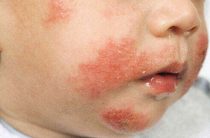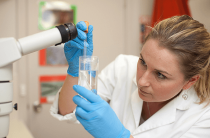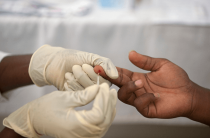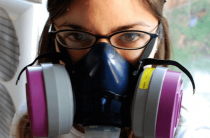The most effective way to prevent allergic reactions is to prevent contact with the allergen. In turn, for this it is necessary to know which substance itself is an allergen for this patient. Not all manifestations of allergies appear immediately after contact with the allergen, and in some cases, a significant number of alleged allergens may fall under suspicion.
In such cases, it is impossible to do without special tests that are necessary to identify a specific allergen. In the event that allergic reactions are not the result of a malfunction of the immune system, that is, they are not part of an allergic disease, a comprehensive examination of the state of internal organs, tests for the presence of parasites and other measures are necessary.
Types of tests for allergies
 Analyzes for this disease, in general terms, can be divided into two classes. The first class includes activities that are carried out in-vivo. With allergies, this involves laboratory measures aimed at monitoring the direct reaction of the patient's body. In this case, the patient is exposed to hypothetical allergens in various ways, after which a detailed observation is carried out for the presence or absence of an immune response, in the form of allergic reactions. In-vitro varieties of analyzes involve laboratory monitoring of diagnostic activities. For allergies, this type of diagnosis includes general urine, blood and special tests for antibodies.
Analyzes for this disease, in general terms, can be divided into two classes. The first class includes activities that are carried out in-vivo. With allergies, this involves laboratory measures aimed at monitoring the direct reaction of the patient's body. In this case, the patient is exposed to hypothetical allergens in various ways, after which a detailed observation is carried out for the presence or absence of an immune response, in the form of allergic reactions. In-vitro varieties of analyzes involve laboratory monitoring of diagnostic activities. For allergies, this type of diagnosis includes general urine, blood and special tests for antibodies.
Advantages of in-vitro methods:
- High safety, because in this case, there is no need to expose the patient to direct contact with the allergen. These tests can be used in babies, pregnant women and the elderly;
- The ability to detect a reaction to a large number of allergens in a short period of time;
- This type of diagnosis allows you to find out not only the cause of the allergy, but also the characteristics of the patient's immune system.
Advantage of in vivo methods:
- These diagnostic methods serve as a direct way to determine the allergen;
- Differ in high visibility, in relation to other methods;
- Allows you to track the nature of the development of symptoms
When searching for an allergen, such data about the patient as his lifestyle, professional employment, his own observations, characteristics of symptoms, the presence of concomitant diseases, patient complaints, and the presence of standard allergens in everyday life are of great importance.
Skin tests
Skin tests are a method of diagnosing allergic diseases, which involves observing the behavior of the skin at the site of contact with the alleged allergen. The skin has special cells that are responsible for the production of special antibodies that are involved in the further development of allergy symptoms.
For most allergens, skin testing has a high level of reliability. The only thing that many researchers note is the unreliability of skin tests in relation to food allergens. However, in other cases, they allow us to speak with a high degree of reliability about the nature of the substance that provokes allergies. Methods for conducting tests using skin tests are fraught with the development of such complications as anaphylactic shock.
Anaphylactic shock is a severe development of an allergic reaction, characteristic of the body's hypersensitivity. Often, anaphylactic shock develops as a result of allergies to drugs or insect bites. Young people are most prone to such development.
This symptom is manifested by swelling of the laryngeal tissues, bronchospasm, and a drop in blood pressure. During anaphylactic shock, death can even occur due to cardiac collapse. Anaphylaxis can develop both immediately after contact with the allergen, and within a few hours after it hits.
For this reason, testing, which involves direct contact with a substance that provokes allergic reactions, should be carried out only in a medical hospital, with the possibility of providing timely emergency care.
Skin test by scarification method
Most often, skin tests are carried out using this method. To do this, a small amount of allergen powder solution is placed on the patient's skin. After that, a special incision is made so that the allergen gets inside. After 20 minutes, monitoring of the condition of the skin begins. A sign that the applied substance is an allergen is a change in the condition of the skin, the appearance of small swelling and rashes at the point of contact.
Skin test with a scalpel
This method of conducting skin tests consists in the fact that on the patient's skin, allergens, in the form of a solution, penetrate into the skin through incisions made with a scalpel. To avoid distorting the test results, before applying these measures, it is necessary to exclude the use of antihistamines, since they stop the development of an allergic reaction, which in this case is used for diagnosis.
Intradermal injection of an allergen
The introduction of the allergen into the skin allows you to achieve the greatest accuracy. In this case, the alleged substance is injected, using a medical syringe, into the deep, most sensitive parts of the skin.
Application test
This skin test method helps to identify allergens that provoke contact dermatitis. That is, this kind of allergy, in which the symptoms develop in response to interaction directly with the skin of the patient. This happens when particles of wool or cosmetics get in. In this case, the allergens are distributed on a special test patch, which is placed on the skin for 48 hours. With this method, the contact point should never be wetted, it is also necessary to refrain from physical exertion so as not to cause intense sweating.
Provocative tests
Provocative tests serve to ensure that the immediate reaction of the organ on which allergic reactions occur (eyes, nose, respiratory system) upon contact with the allergen. These analyzes are carried out only during the period when there are no allergic manifestations, so as not to aggravate the course of the disease and not cause severe complications. Provocative tests are divided, depending on the method of contact: eye, nasal, inhalation.
Ocular provocative tests are done if there is a history of allergic disease with allergic conjunctivitis. For this diagnostic measure, liquid solutions of allergen extracts are used. The test is carried out starting with the minimum dosage, then it is gradually increased if there is a reasonable suspicion of a certain allergen. In these cases, the time intervals between the introduction of the allergen are 30 minutes.
When conducting the test itself, the patient's gaze should be directed upwards, while being instilled into the conjunctival sac of one eye. Then, about 30 seconds, you need to linger in this position so that the liquid is evenly distributed. A positive result, on exposure to an allergen, is the appearance of redness of the eyes, itching, tearing and other symptoms of allergic rhinitis. In order to remove the allergen from the eye cavity, it is necessary to flush with saline solution.
nasal test
These tests are performed when allergic rhinitis is suspected, in order to identify a respiratory allergen. The formation of polyps, as well as infectious diseases of the nasal cavity, are contraindications for the use of this type of analysis. In some cases, if the patient's nasal septum is uneven, then a nostril with a large diameter is used for diagnosis. During the procedure, the patient tilts his head to the opposite side and stays in this position for a minute after the injection.
The results of the analysis, for a certain type of allergen, are considered positive if, after contact, itching of the nasal cavity develops, swelling and the appearance of a runny nose. After positive test results, the nasal cavity is washed to clear it of the presence of various substances.
Blood test for antibodies
This method diagnoses the cause of the disease by increasing the clinical values of IgE and IgG antibodies. It has the following advantages over in-vivo diagnostic methods:
- Complete safety for the patient, since the observation is carried out on the withdrawn blood;
- Can be carried out during the period of acute development of allergy symptoms;
- Can be performed in pregnant women, babies and the elderly;
- On the seized material, it is possible to carry out diagnostics with a large number of different allergens;
- It is carried out even in patients with severe forms of allergies
IgE is a general class of antibodies. In the normal state, their presence in the blood is minimal. He is responsible for allergic reactions that develop instantly (no later than 30 minutes) after the allergen has been ingested. Also, the presence of this protein in increased amounts may indicate the presence of parasites.
IgM are antibodies that are specific to certain allergens. They take part in the delayed manifestations of allergies. Under their guidance, allergic reactions occur, which develop some time after contact with the allergen (from 2 hours to several days).
The disadvantages of this method include the high cost of analysis, as well as the need for special laboratory equipment, which medical institutions do not always have.














